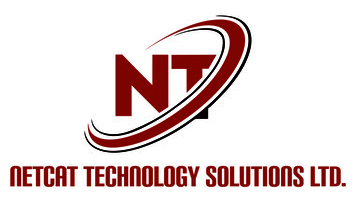Seqrite Zero Trust Network Access (ZTNA)
The Ultimate VPN Replacement for Secure Access
Seqrite Zero Trust Network Access (ZTNA) enforces a strict zero-trust user access to enterprise applications for employees, contractors, and vendors whether they are inside or outside the corporate network.
It wraps security around every user, device, and connection, every time. By replacing traditional VPNs with a secure, centralized platform, Seqrite ZTNA provides full visibility into all user activity, ensures controlled access to enterprise applications and services, and helps organizations build a robust zero-trust ecosystem with a well-defined set of users and applications.
Seqrite ZTNA uses a cloud-first approach, these solutions deliver security around every user, device, and connection every time dramatically reducing the risk of cyber breaches.
ZTNA offers a more secure, scalable, and cloud-friendly alternative to traditional VPNs, making it ideal for today’s world of remote work, widespread SaaS adoption, and increasing cyberattacks.
Migrate to Zero Trust security approach with Seqrite ZTNA
protect your enterprise applications from evolving threats.
Rethinking Enterprise Security with Seqrite Zero Trust Network Access
Modern enterprise IT environments are more distributed and complex than ever. Applications now span on-premises data centers and multiple cloud platforms. Employees may work from corporate offices, remote locations, or through VPN connections.
In this landscape, traditional perimeter-based security is no longer sufficient. Zero Trust introduces a modern security built on the principle of “never trust, always verify.” Under Zero Trust, no user or device is trusted by default whether they are inside the corporate network or connecting from outside. Every login attempt, every connection, and every request to access a corporate application or resource must be authenticated, verified, and evaluated against defined security policies.
Zero Trust relies on a combination of policies, processes, and advanced technologies to prevent data breaches. Access is granted only after evaluating multiple factors such as user identity, device posture, location, and context. By enforcing strict, identity-based controls, Zero Trust ensures that access to enterprise systems and applications is tightly managed, significantly reducing the risk of unauthorized entry and lateral movement across the network.
Peter Rice
Chief Operating Officer
Why Should You Choose Seqrite ZTNA Over VPN?
| VPN | ZTNA |
|---|---|
| Complete access to LAN | Specific application-level access |
| Lacks flexibility and granularity | Highly granular control over user access |
| Users can access anything on the network once connected | Restricts access to only authorized applications |
| Difficult to enforce specific policies | Easier enforcement of detailed security policies |
| Limited visibility into user actions | Enhanced visibility into user actions and app access |
| Potential for significant security gaps | Minimizes security gaps with precise access control |
5 Signs Your Organization Needs Zero Trust Network Access (ZTNA)
1. Your VPN Is Becoming a Security Liability
Traditional VPNs give broad network access once connected, making a single compromised credential dangerous.
VPN also slows down network connection speed.
ZTNA fixes this by granting only application-specific, least-privilege access, reducing blast radius and preventing lateral movement.
ZTNA reduces costs by removing the need for costly VPN infrastructure and cutting down the management workload of traditional security tools. It also improves network efficiency and lowers bandwidth usage, creating additional savings for the organization.
2. Remote Access Is Hard to Manage
IT teams struggle with VPN client issues, contractor onboarding, and scaling remote connections.
ZTNA simplifies this with cloud-based, seamless access—no tunnels, no gateways, and even agentless options for third-party users.
3. You Have No Visibility After Users Log In
VPNs authenticate once but don’t track user actions, creating gaps in auditing and exposing insider risks.
ZTNA provides full session visibility, including activity logs, session recording, and automated policy enforcement.
4. Your Attack Surface Keeps Growing
Every new app, vendor, or endpoint expands risk and complicates firewall and VPN configurations.
ZTNA makes apps invisible and only accessible via strict identity-based policies, dramatically shrinking attack surface.
5. Security Measures Frustrate Users
Slow authentication and rigid policies push users toward unsafe workarounds.
ZTNA adapts access based on context (device, location, risk level), balancing strong security with smooth user experience.


